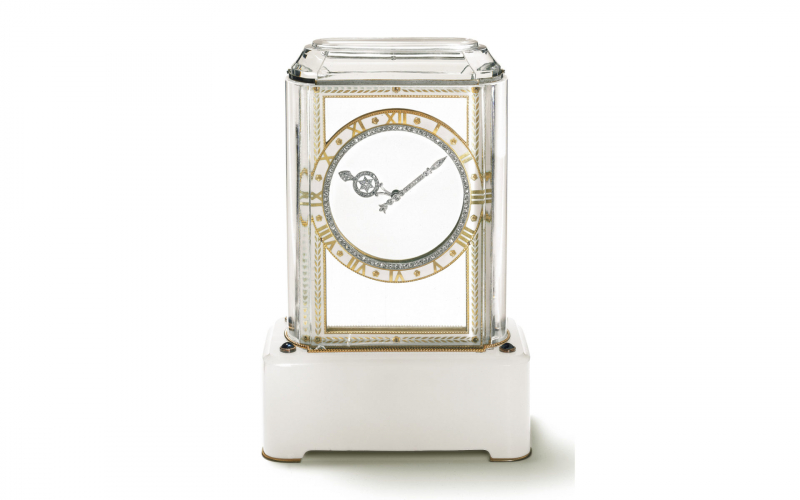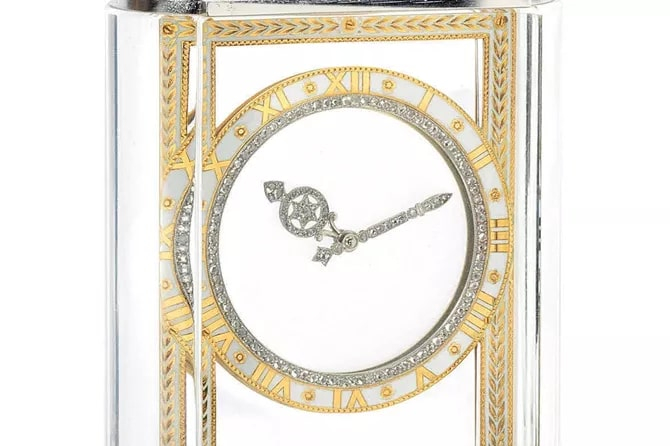Cartier 'Model A' Mystery Clock
We're not going to get into Cartier clock collecting, except to say that they manufactured these completely absurd "mystery clocks” in the 1920s, so-called because the rack-and-pinion system is hidden, giving the impression that the hour and minute hands are floating in mid-air. This clock, which came from the estate of Consuelo Vanderbilt Earl, is one of the most impressive. It is the first of six Portique clocks that were made between 1923 and 1925.
During this time, the East's allure was palpable in Cartier's creative realm. Mystery clock is shaped like a Japanese gate that can be found at the entrance to Shinto temples. The gate is topped with a Biliken, a small mascot with a chubby form and smiling face who conjures up the good spirits who inhabit sacred sites and means "bird perch" in Japanese. The movement of the clock is installed here. The dial appears to be suspended, like a gong.
In 1913, Louis Cartier and renowned clockmaker Maurice Couet collaborated to create the Cartier Mystery Clock. This original 'Pendules Mysterieuses' Model A was a hit at the time, with its captivating use of illusion.
In 2013, Doyle Auction sold this $515,000 rock crystal, gold, black onyx, and enamel clock. It was a world record price at the time and is still one of the most expensive Cartier watches ever sold in auction. While other Cartier mystery clocks have probably fetched bigger amounts since then, this one retains its historical significance.
Price: $515,000








